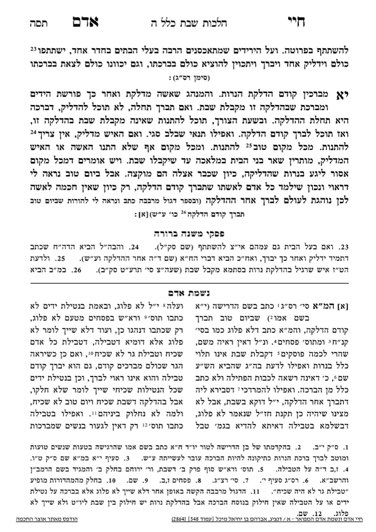We are continuing in siman 11. We learned that the kabbalas Shabbos which takes place through hadlakas neiros does not affect the rest of the family members. However, the Chayei Adam clarifies that the candles and leichter (candelabra) become muktza even for those who have not yet accepted Shabbos.
The source for this halacha is a different case, where people accepted Shabbos through hadlakas nerios mistakenly. For example, people thought it was later than it was, because it seemed dark, but then the clouds cleared. The kabbalas Shabbos can be retracted, but Shulchan Aruch brings an opinion that the one who lit the neiros cannot retract. Then the Shulchan Aruch adds that the leichter should not be touched, one cannot add oil to it, and even if it goes out before others accept Shabbos, it cannot be moved.
The Mishnah Berurah understands that this last halacha follows the opinion that a mistaken kabbalas Shabbos is a valid kabbalah. Therefore, it is Shabbos for the individual who lit the neiros, and we have a concept that something which is muktza for its owners is muktza for everyone. Muktzah is not defined by every individual, but by the owner.
There is a concept that something designated for the purpose of a mitzvah has a certain level of kedusha, and cannot be used for other purposes. This would explain why others cannot use it. However, it does not explain why it cannot be moved, and the Biur Halacha remains unsure as to why it cannot be moved. The Magen Avraham suggests that if one moves it, they may use it for weekday activities, which would be a bizayon.
The Chayei Adam takes this halacha and applies it to any time one lights neiros Shabbos. Once they have been lit, even people who have not yet accepted Shabbos cannot touch or move the neiros.
The Chayei Adam does not touch on the issue of lighting in the place the neiros will be used, or whether one can light the neiros and move them afterwards to the place they will be used. The Mishnah Berurah writes that as long as they are lit in a room in which they can be useful, such that there was a chiyuv hadlakah in that room, they could technically be moved afterwards. They can be moved afterwards since the whole home is their makom hadlakah. This is in contrast to neiros Chanukah, which have a specific place.
The Mishnah Berurah brings the opinion of the Levush that they cannot be moved. However, it is not because of the concept of hadlakah osah mitzvah (that they have to be lit in the appropriate place, as by Chanukah), but because if they are lit in a specific place, it is clear they are for Shabbos. If one carries them around, it would appear as though these candles are being used as a flashlight or another weekday purpose.
Based on this argument, some poskim point out that since we have electric lights, it is obvious that the Shabbos candles are only lit for Shabbos, so it would be muttar to move them after lighting. This idea is brought in Piskei Teshuvos, in the name of Shu”t Kinyan Hatorah.
Summary
- Although a family member who lights neiros Shabbos does not impose kabbalas Shabbos on other family members, the leichter is muktza for everyone.
- If the neiros were lit in a room in which there is a chiyuv hadlakah, they may be moved afterwards.



